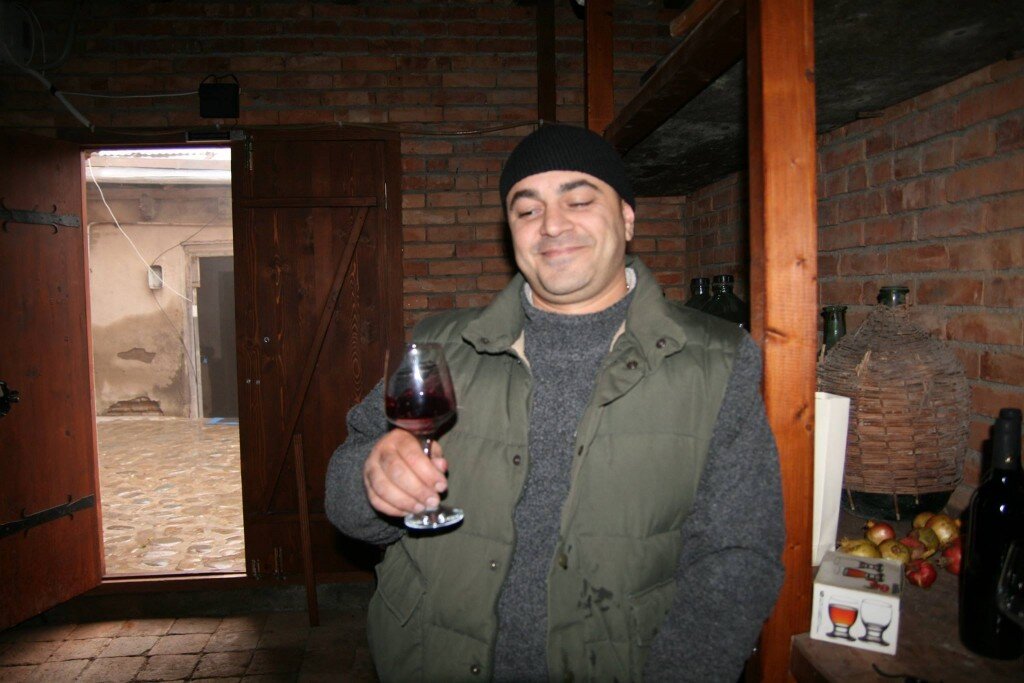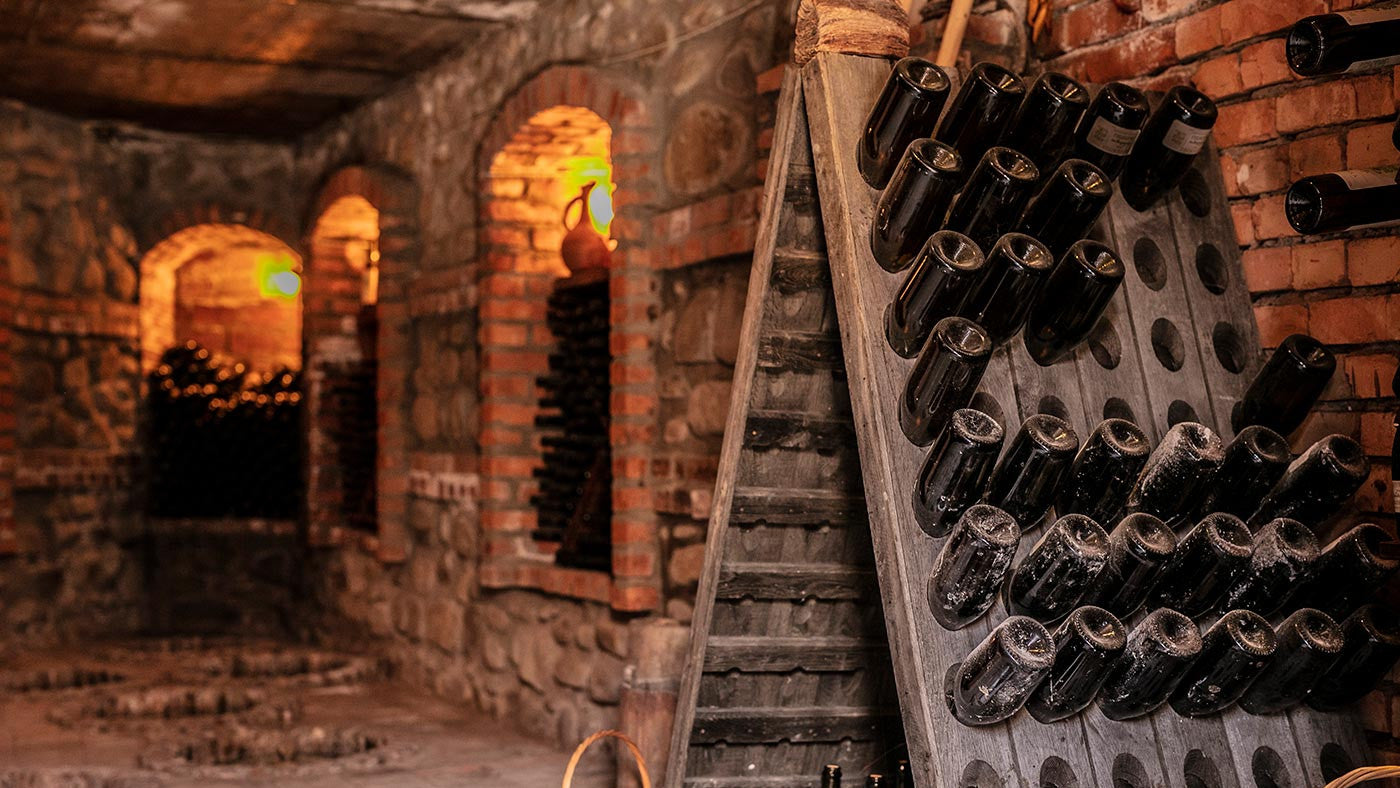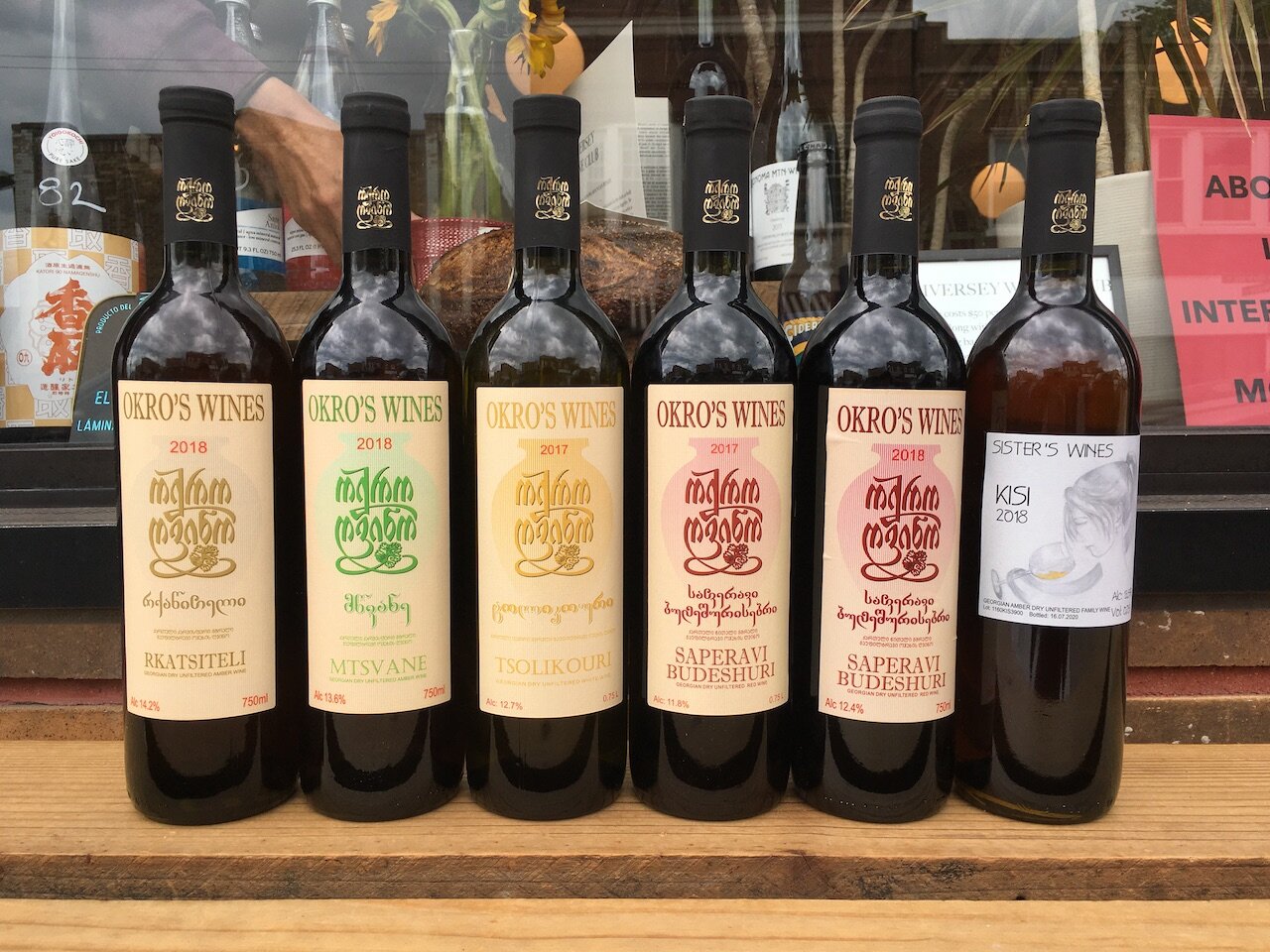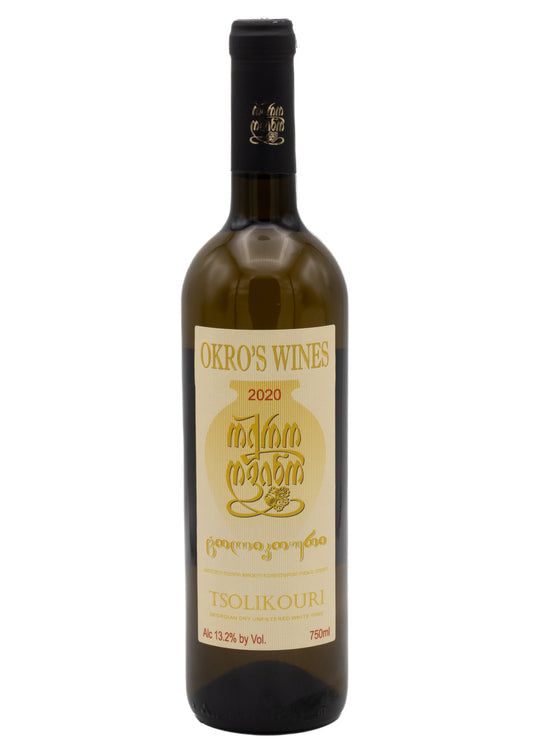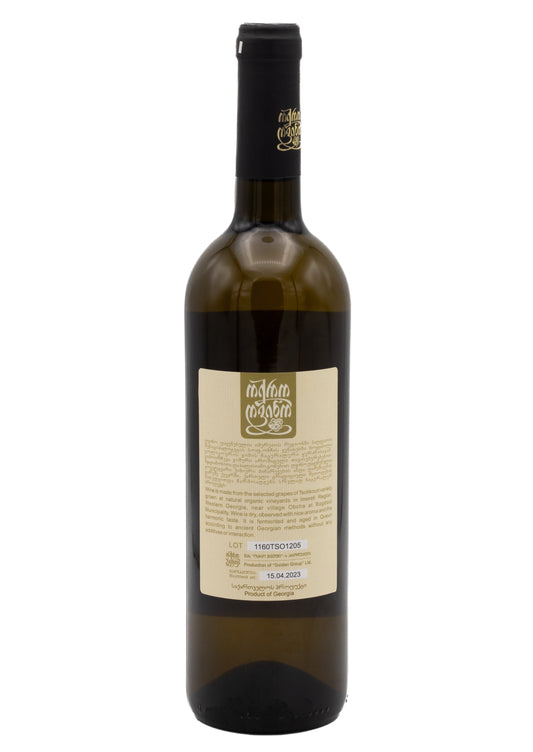OKRO'S WINES
JOHN OKRUASHVILI
Kakheti, Georgia
Originally from the Kakheti region of eastern Georgia, John has been immersed in his country’s rich wine culture since he was born, as any other local winemaker. His own wine chapter truly began in 2009, when he first bottled his wine under the name Okro.
To taste his wines is to drink from a time capsule: the farming is of course organic, and has been since time immemorial; John’s vines – a few hectares of Saperavi and Takveri for the reds and Tsolikouri, Kakhuri Mtsvane, Rkatsiteli for the whites – are nurtured with care and he does not touch his grapes or his wines once in the cellar.
QUICK FACTS
ESTABLISHMENT
2004
PRODUCTION SIZE
30,000 bottles
AREA
5.5 hectares
GRAPES
Rkatsiteli, Mtsvane, Saperavi, Budeshuri, Tsolikouri, and Tavkveri
SOILS
Dark clay, sandstone, and more
WINEMAKING STYLE
Wines are stored in traditional qveris, which are large earthenware vessels commonly used in Georgia for fermentation, storage, and aging of wine. The wines age for 1 to 6 months in the qveris.
FUN FACTS
John grew up with John Wurdemann’s (founder of Pheasant's Tears) wife Ketevan, and through this friendship is where he started his interest in winemaking.
It took him 5 years of experimenting, and in 2010 he bottled his first wines.
OKRO'S WINES LOCATION
-
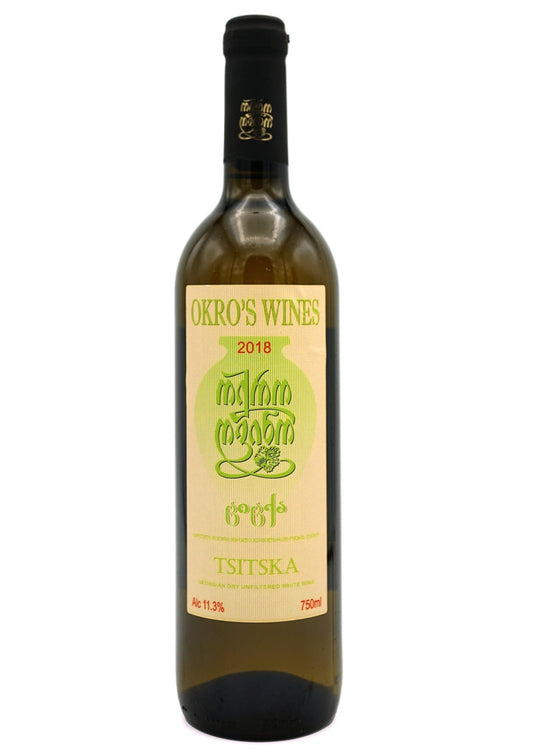 Sold out
Sold outOkro's Wines Tsitska 2018 - SOLD OUT
Regular price HK$200.00Regular priceUnit price / per -
Okro Tsolikouri 2020
Regular price HK$220.00Regular priceUnit price / per
BACKGROUND OF NATURAL WINE IN GEORGIA
Georgia, a cradle of winemaking, has become a huge wine destination for natural wine drinkers. Located at the crossroads of Europe, Asia, and the Middle East, it boasts a rich tradition of crafting natural wines using the ancient Qvevri method, where wines ferment in large clay vessels buried underground. Key grape varieties such as Saperavi and Rkatsiteli thrive in prominent wine regions like Kakheti, contributing to the country's reputation as a hub for distinctive and terroir-driven natural wines. Embrace the heritage and flavors of Georgian natural wines, a testament to the country's enduring commitment to its vinicultural roots.
Organic, Biodynamic and Natural wine. What’s the difference?
To understand this concept and its various ramifications, it is necessary to keep something clear in mind: before the 20th century and the spreading of affordable synthetic fertilisers, all farming was organic. When the shift to the use of synthetics and pesticides happened, it became necessary to diversify traditional organic farming from the new modern farming.
ORGANIC WINE
Simply put, organic farming forbids the use of synthetic fertilisers, synthetic pesticides, herbicides, or genetically modified organisms. The basic requirements are generally specific and engage the farmers not to use any chemical fertilisers and other synthetic products in the vineyard. It does not prevent the vintner from using the conventional winemaking process after harvesting.
BIODYNAMIC WINE
Let’s take organic farming one step further: Biodynamic. The creator of this agricultural system is the Austrian philosopher Rudolf Steiner, who developed the principles of biodynamics in a series of lectures given in 1924 in Germany. Here lies the foundation of true organic wines, with a strict limit in the use of additives, stringent requirements and at the end obtaining a biodynamic certification.
NATURAL WINE
The previous definitions are usually, and rightfully, associated with it, because most natural wine is also organic and/or biodynamic. But not vice versa!
Natural wine is wine in its purest form, simply described as nothing added, nothing taken away, just grapes fermented. No manipulation whatsoever, minimal intervention both in the vineyards and in the winery. Healthy grapes, natural yeast and natural fermentation, with no filtration nor fining. Sounds easy, right? However, making natural wine is unforgiving and it requires a bigger amount of work than conventional wine. To this day, natural wine has no certification yet.



